El Paso County is unique among the major Texas counties. Lying outside of the Texas Triangle of Houston, DFW, and Austin/San Antonio, the city of El Paso and its surrounding area stands on its own as a major metro area. On the border with Mexico, the city and county have a diverse population, culture, and businesses. El Paso County also leans heavily toward working families and the middle-class over some of the wealthier counties. This does not make property in El Paso County cheaper than the other big areas of Texas, however, and rising values can be especially difficult for homeowners with modest incomes or small businesses.
With property values in the area nearly doubling in the past decade, more taxpayers are exploring property tax appeals than ever before in El Paso County. While only 9% of properties were protested in 2023, the number has been consistently on an upward trend, and it is not uncommon for a county to dramatically increase in appeals in a few short years. In this article, we will explore how appeals have influenced El Paso values in the past year and why it is in the best interest of every taxpayer to question their taxes.
Appeals Help Balance Skyrocketing Home Values
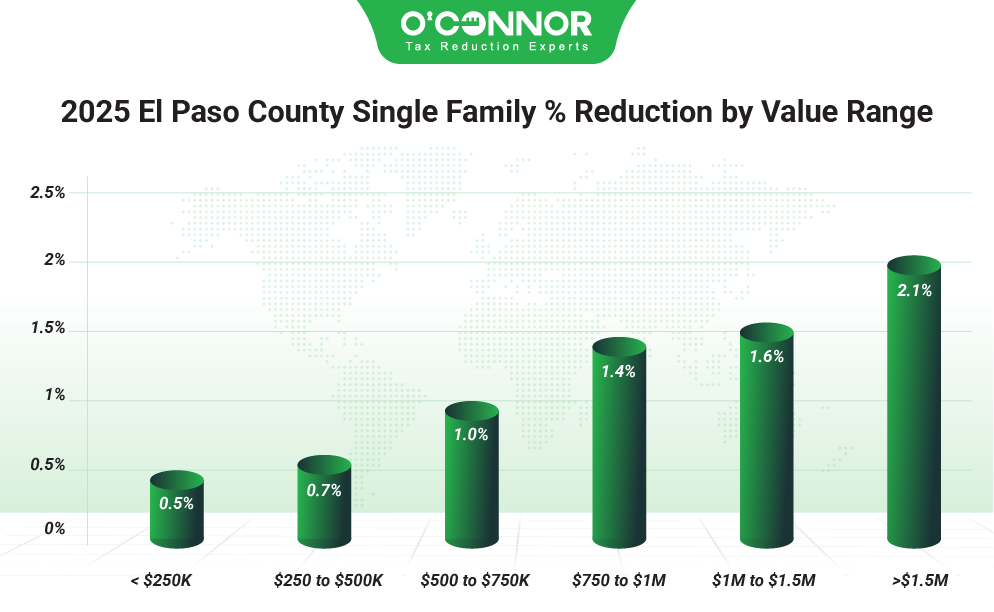
The value of single family homes in El Paso County saw a large rise in 2025, with an overall increase of 5.8%. This was not isolated to one or two categories, but virtually all types of homes saw their taxable value increase by 5% or more. The El Paso Central Appraisal District (EPCAD) estimated that 39% of residential properties were overvalued. After informal and formal appeals were tallied, the overall value was lowered by 0.7%, going from $56.83 billion to $56.46 billion. Homes worth under $250,000 were the largest contributors to the value and were responsible for $26.86 billion after a cut of 0.5% thanks to appeals. Homes valued between $250,000 and $500,000 were lowered 0.7%, totaling $24.35 billion. While cuts did not match the increases, they still provided some much-needed relief to the homes of working people and the middle-class. Large homes did see more substantial cuts, but not enough to totally wipe out the increases.
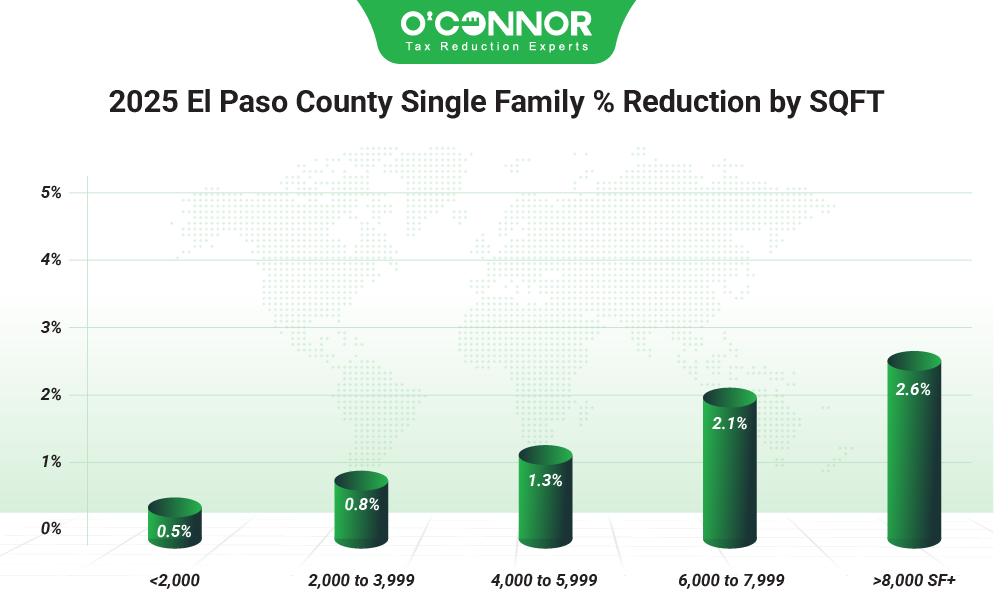
Due to its history, it should be no surprise that the majority of El Paso’s homes are of modest size. Those under 2,000 square feet were responsible for the biggest chunk of value, $33.53 billion after a reduction of 0.5%. Homes between 2,000 and 3,999 square feet were in second place with $20.59 billion, following an improved reduction of 0.8%. The only other category that crossed the $1 billion mark was for homes between 4,000 and 5,999 square feet, which reached $1.79 billion after a solid reduction of 1.3%. The highest reductions were seen for massive homes, those these two categories were responsible for a fraction of the value.
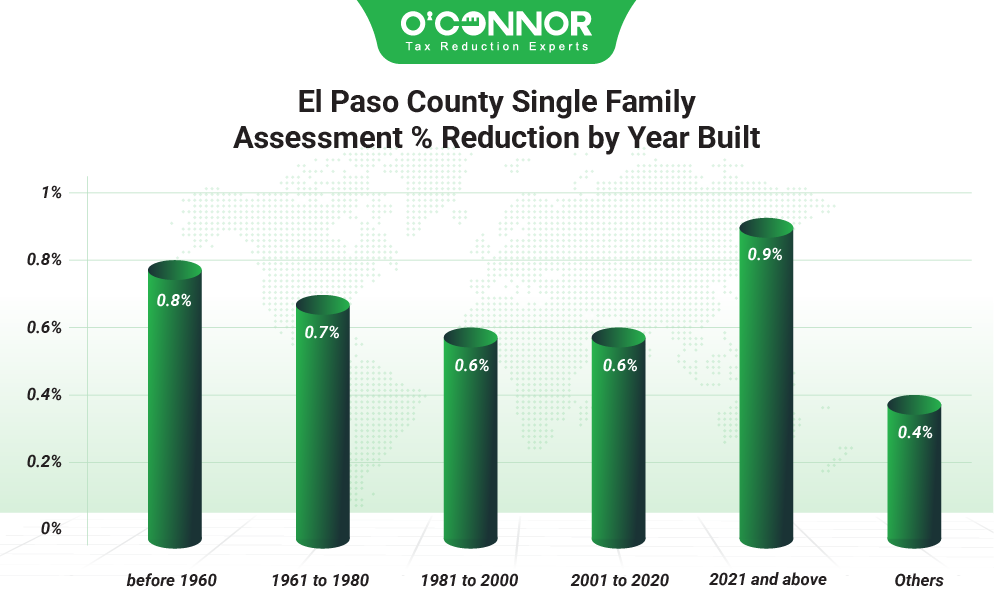
Across Texas, one constant trend is that most value was constructed in a boom period between 2001 and 2020. This applies to both homes and businesses almost universally. El Paso County is the same, with $20.64 billion in home value coming from this era, even after a reduction of 0.6%. Despite another cut of 0.6%, homes built from 1981 to 2000 reached $12.98 billion. Older properties had a larger influence than most counties, with those from 1961 to 1980 and those built before 1960 contributing $10.08 billion and $8.41 billion respectively. New construction added 31.3% to its value in 2025, though this was chipped away at by appeals, which reduced the number 0.9% to $4.26 billion.
Commercial Appeals Wipe Out Increases
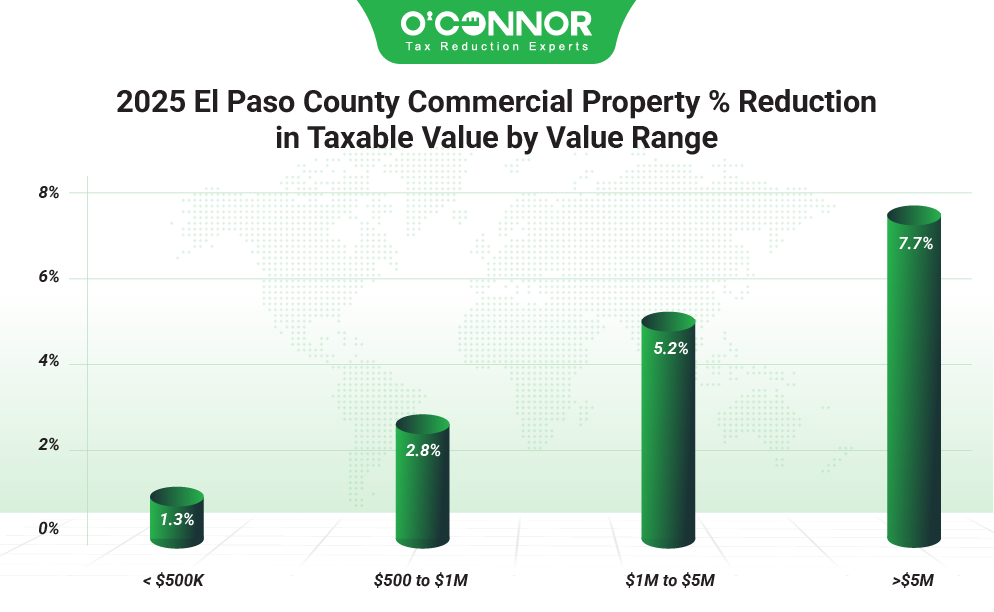
While El Paso County homes saw large increases and little in the way of relief thanks to appeals, businesses did the complete opposite. Commercial properties were handed an overall increase of 1.4% by EPCAD. When informal and formal appeals were combined, they managed to earn a strong reduction of 5.6%. This not only wiped out the gain but reduced taxable value below 2024 levels. The biggest driver of this was commercial properties worth over $5 million, which saw a reduction of 7.7%. This was the No. 1 category for value, and it fell from $4.72 billion to $4.35 billion, building upon an assessed decrease of 0.8%. Those between $1 million and $5 million dropped 5.2% thanks to appeals, for a final total of $3.02 billion. The two smallest categories notched reductions of 2.8% and 1.3%, with those worth between $500,000 and $1 million getting the bigger cut. Overall, commercial properties demonstrated the power of solid, consistent appeals.
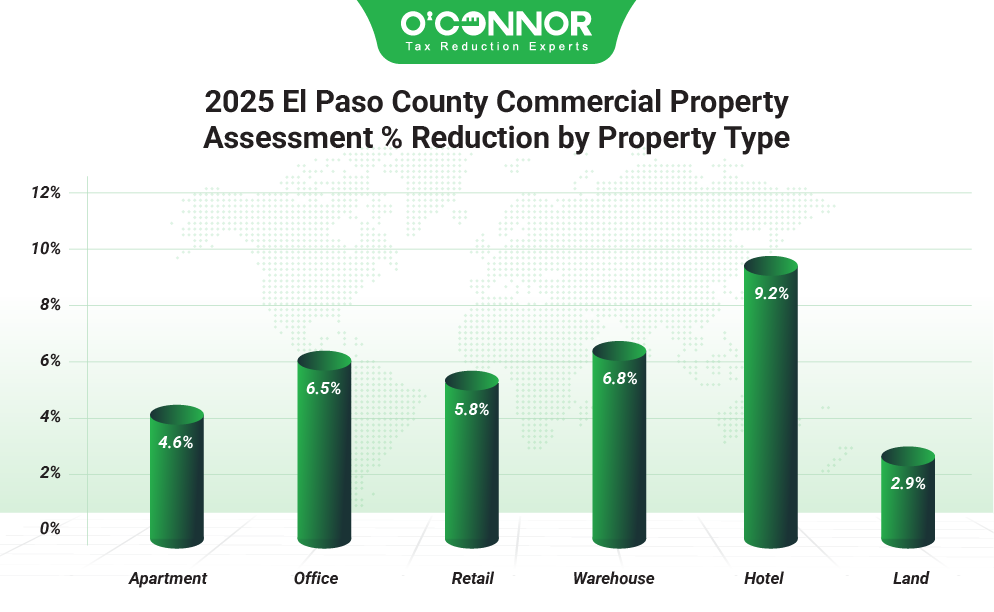
As with most major Texas counties, El Paso’s No. 1 commercial property was apartments, which totaled $3.17 billion after a reduction of 4.6%. These had already been lowered 4.2% by EPCAD, leading to a bonanza of savings for apartment owners. After that, there was no runaway No. 2, though retail managed to take the spot with $1.80 billion after a reduction of 5.8%. Offices fell 6.5% to reach $1.69 billion, while warehouses tumbled 6.8% to $1.32 billion. Land had seen a large jump of 14.1% and this was partially lowered by 2.9%.
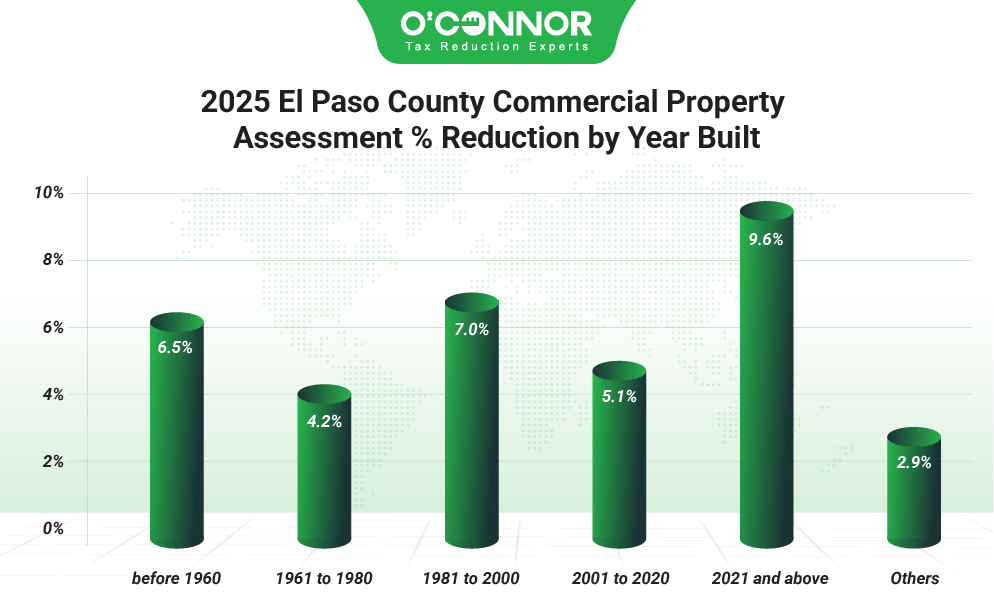
Commercial properties followed the construction era pattern of homes, but not quite to the same extreme. The boom period of 2001 to 2020 resulted in 30.7% of all value, or $2.95 billion after a cut of 5.1%. $2.19 billion came from properties built from 1981 to 2000, while $1.82 billion came from those built between 1961 and 1980. These were reduced by 7% and 4.2% respectively. Like homes, new construction saw a giant leap of 29.3% but was trimmed 9.6%. The final total value for new construction was $749.48 million.
Appeals Took Apartment Values Below 2024 Numbers
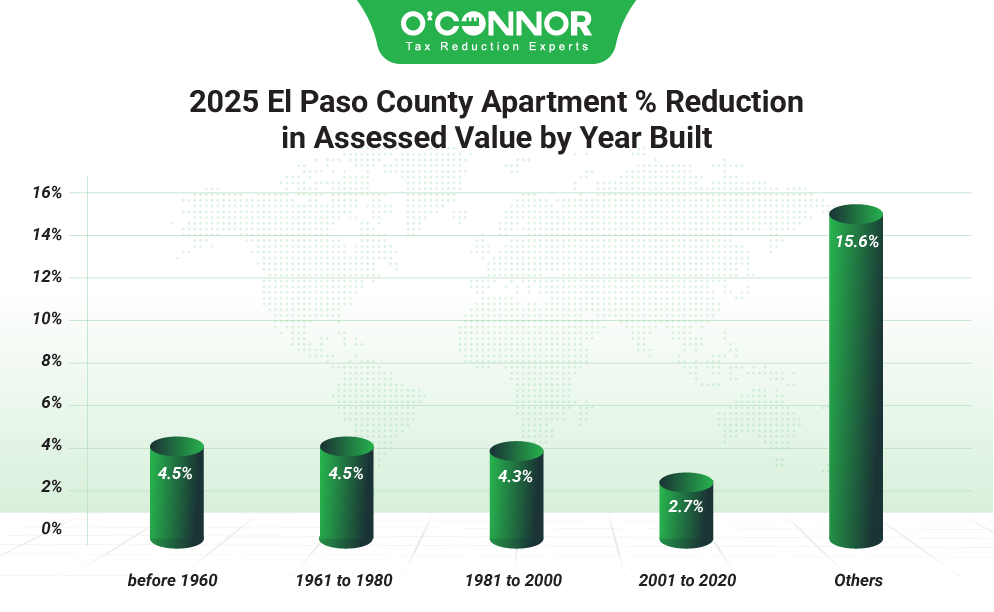
Despite their importance, apartments saw their value lowered 4.2% by EPCAD to start 2025. This was followed up by a solid appellant reduction of 4.6%, leaving a total of $3.17 billion. There was no real deviation in the age of construction pattern, with those built from 2001 to 2020 being the most valuable with $1.10 billion after a cut of 2.7%. After a reduction of 4.5%, apartments built between 1961 and 1980 totaled $854.80 million, while those from 1981 to 2000 experienced a drop of 4.3% to $685.96 million. New construction shot up like a rocket, adding 43.5% in value. This was slowed by a sizeable reduction of $15.6%, bringing the total to $206.93 million. Older apartments were generally assessed with dropping values by EPCAD, representing a switch to new and recent construction.
Rising Office Values Lowered 6.5%
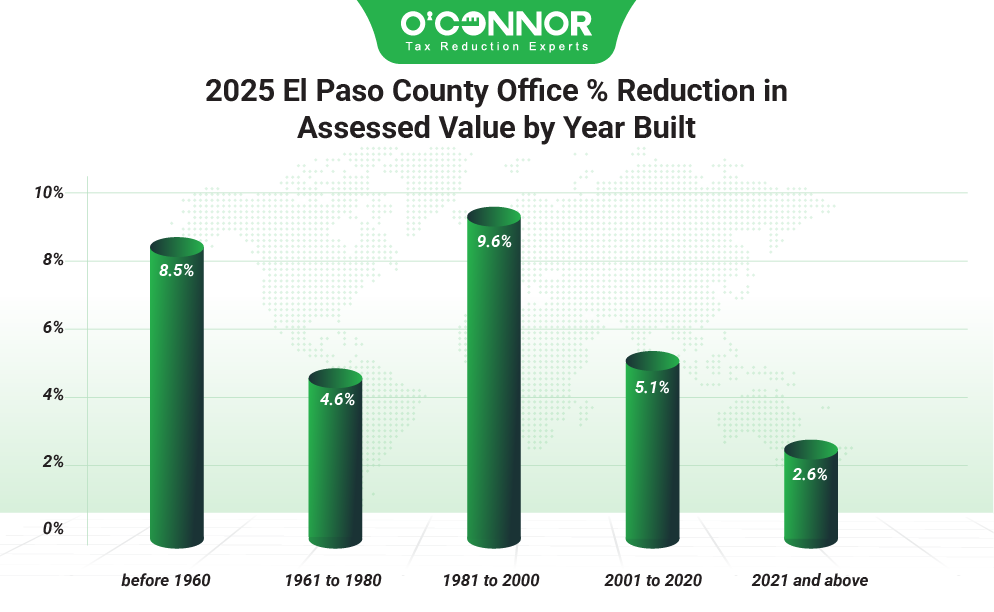
EPCAD listed offices as gaining 9.3% in value in 2025, the highest of any commercial property. This was quickly met with appeals, which managed an overall reduction of 6.5%, which meant a new total of $1.69 billion. $582.41 million of the total came from offices built from 2001 to 2020, putting them in line with other constructions. These boom period offices were lowered 5.1%. Offices from 1981 to 2000 were slashed 9.6%, while those from 1961 to 1980 decreased by 4.6%. This meant values of $433.03 million and $355.22 million respectively. New construction added 14.9% and was only appealed down 2.6%. This resulted in a final figure of $88.22 million.
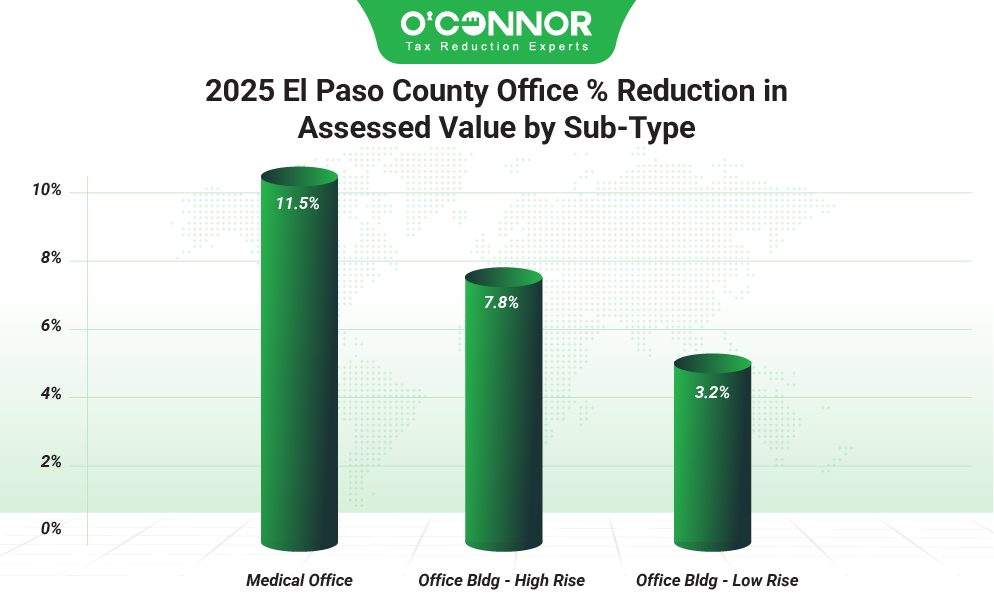
Offices were split into three categories by EPCAD. Low-rise buildings were No. 1 with $961.58 million after a reduction of 3.2%. Medical offices got a large cut of 11.5%, falling to $554.17 million, while high-rises hit $175.44 million after a reduction of 7.8%.
Retreating Retail Properties Shrunk Further by Protests
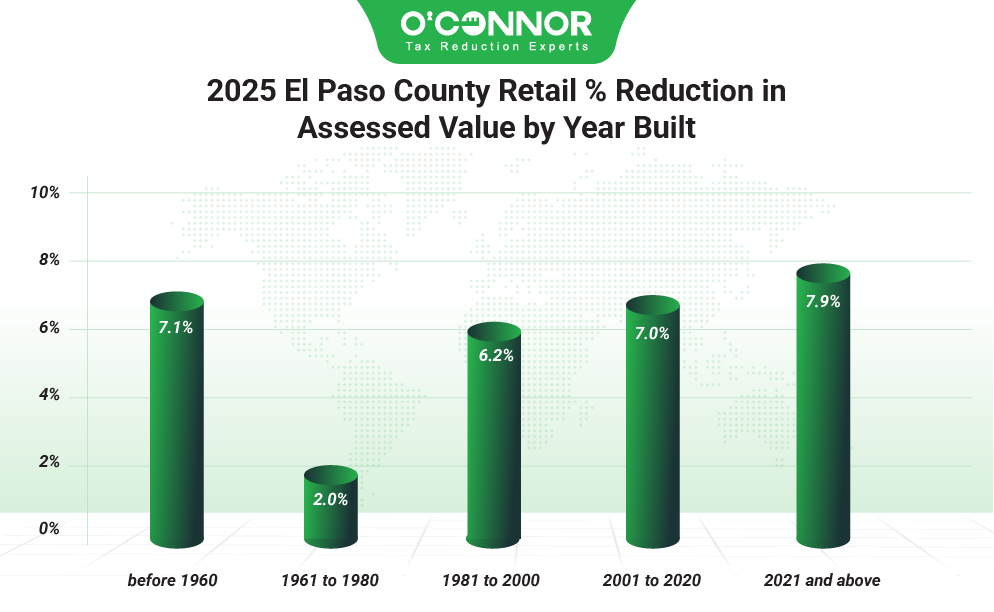
Retail values took a step back in 2025, with an overall assessed loss of 0.2%. This was then built upon by taxpayers, who utilized appeals to lower it again by 5.8%. Staying true to the bit, the largest block of value was retail spaces built from 2001 to 2020, accounting for $647.98 million after a good reduction of 7%. Retail properties often skew older, which was true in El Paso County. 23% of value came from retail buildings built between 1961 and 1980, while those older than 1960 contributed 14.4%. 21.8% came from those constructed between 1981 and 2000, which translated to $384.27 million after a reduction of 6.2%. New construction bloomed with an initial increase of 32.8%, but was lowered 7.9%, finishing with $96.70 million.
Retail spaces were broken down into four separate groups by EPCAD. As to be expected in Texas, strip centers were the No. 1 property type with $1.05 billion following a reduction of 5.7%. The remaining three were quite close together. Regional shopping centers totaled $261.23 million, single-occupancy stores $264.02 million, and neighborhood shopping centers $216.16 million. These all saw reductions of 7.4%, 3.2%, and 7.4% respectively.
Warehouses Add to Existing Decreases
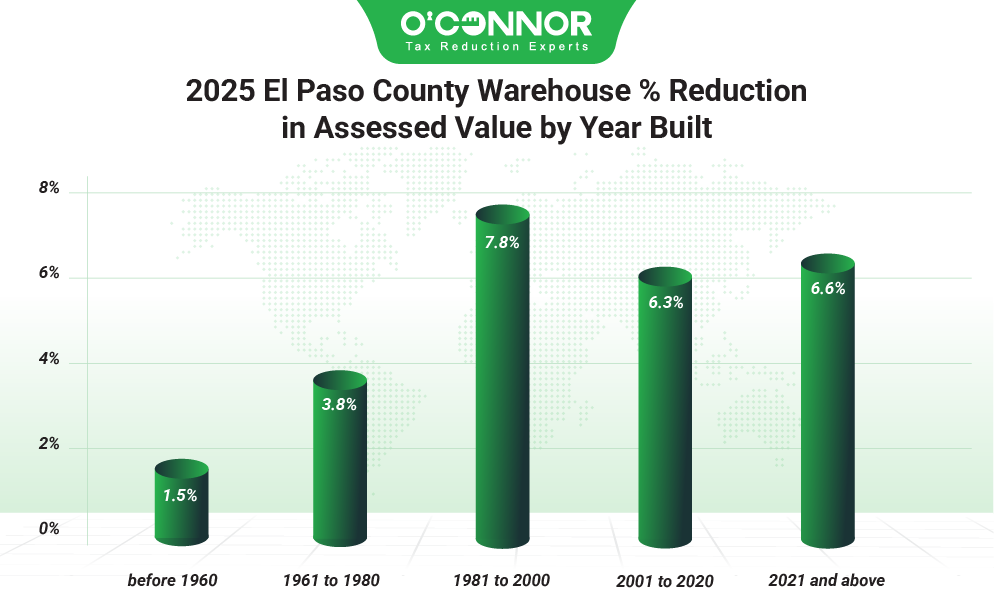
Warehouses, like retail spaces, started 2025 with a small loss, this time one of 0.8%. Most of this loss came from a large 4.2% drop in the value of warehouses built from 2001 to 2020, finally breaking the streak as top dogs for that construction era. Warehouses constructed between 1981 and 2000 were responsible for 42.3% of all value, which meant $557.67 million after a large cut of 7.8%. Those built between 2001 and 2020 still managed to reach $367.78 million despite the initial loss and after being decreased 6.3% thanks to appeals. New construction accounted for 21.3% of value, which translated into $280.13 million, after a cut of 6.6%.
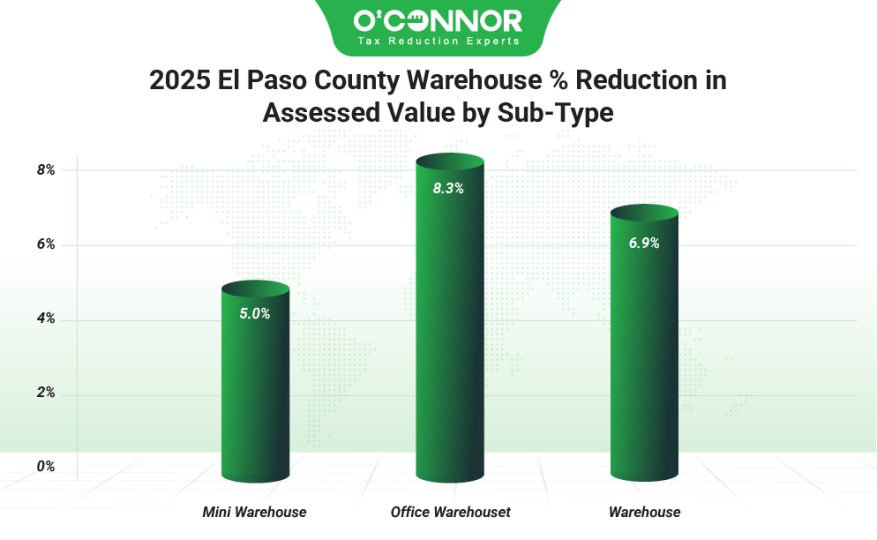
Warehouses had three classifications according to EPCAD. Generic warehouses took first place with $736.77 million following a reduction of 6.9%. Mini warehouses took second with $300.41 million, including a reduction of 5%. Office warehouses were just behind, and after a decrease of 8.3% managed to account for $289.26 million.
El Paso Needs More Property Tax Protests
There was certainly quite a divide between homes and businesses in the 2025 tax season. Homes were hit with steady increases and had few property tax appeals to counter them. Businesses, on the other hand, had many assessed decreases that were bolstered by excellent appeals. For a county as large as El Paso, there are relatively few appeals. Commercial properties usually appeal annually as a standard cost-cutting measure, which is why they fared so well. It is clear that homeowners should be protesting a lot more if they want to keep up with the aggression of EPCAD.
We at O’Connor are here to help. As one of the largest property tax consulting firmss in the nation, we have all the resources needed to help with your appeal journey. We were able to assist 185,000 clients across the nation in 2024. Based in Houston, helping our fellow Texans is our specialty, no matter the county or property. It pays to have an expert on your side when you are protesting your taxes. In El Paso County, our residential clients saved 3.6% on the overall taxable value, blowing away the county number of 0.7%. This meant that our residential clients saved a total of $5.13 million in taxable value. There is no cost to enroll with us, you never see an upfront fee, and you are only charged a contingency fee from your winnings if your taxes are lowered. Additionally, we will appeal your taxes annually, netting you improved cuts as we build on each victory.

